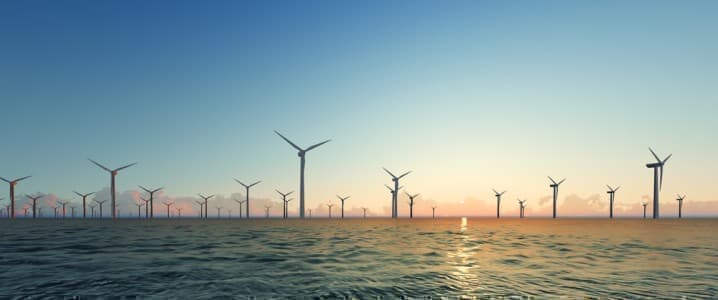Bill payers are being left £1.5bn worse off per year due to Treasury red tape blocking new offshore wind projects, according to new research from the Energy and Climate Intelligence Unit (ECIU).
The climate body warns that Treasury rules that constrain the number of contracted farms allotted at offshore wind auctions will constrain the number of projects being approved and keep bills higher.
Offshore wind projects are secured through bidding processes – known as allocation rounds – where projects are given income guarantees known as strike prices.
This scheme is called the contracts for difference arrangement, where wind farms to be contracted at a lower price than the wholesale price, creating a saving for bill payers.
However, ECIU calculates that inflexible rules around project numbers means the previous auction, the fourth allocation round, did not max out its budget.
Instead 1GW of wind power was missed out on – including savings of £225m per year, it forecasts.
The ECIU warns the current fifth allocation round, which is expected to conclude next month, could secure as little as 2GW of offshore wind – leading to missed savings of over £1.5bn per year from cheaper renewable energy, compared to around 7GW that could have been secured.
While the government recently increased the budget for the auction from £170m to £190m, there are growing supply chain constraints pushing up the cost of building new turbines.
ECIU warned that globally high inflation alongside CfD maximum strike prices – the highest price for generation agreed before the auctions – could have been altered to reflect these changes to guarantee sufficient bidders in the latest round.
Jess Ralston, energy analyst at the ECIU said: “Government seems to be focused on North Sea gas licences and tax breaks for oil companies that won’t bring down bills while tying up offshore wind farms that generate electricity cheaper than gas in red tape. What is going on?
“Even with inflation pushing costs up for offshore wind, it will still generate electricity much cheaper than gas power stations. Stifling wind farms pushes up bills. Treasury’s rules seem to be actively working against bringing them down.”
The government is targeting 50GW of offshore wind by the end of the decade, above current peaks of electricity consumption levels of around 48GW – meaning it could help make the UK a net exporter, an aim set for 2045.
The UK’s offshore wind fleet is second largest in the world, after China, with a current capacity of 13.9GW – but faces challenges from rival markets including the EU and US which have vast subsidy arrangements.
By Nicholas Earl via CityAM
More Top Reads From Oilprice.com:
- UK's Truck Fleet Faces Pressure To Go Green
- Turkey’s Appetite For Gold Increases As Lira Plummets
- Saudi Aramco Tops Profit Chart, Leaving Tech Titans In Its Wake


















